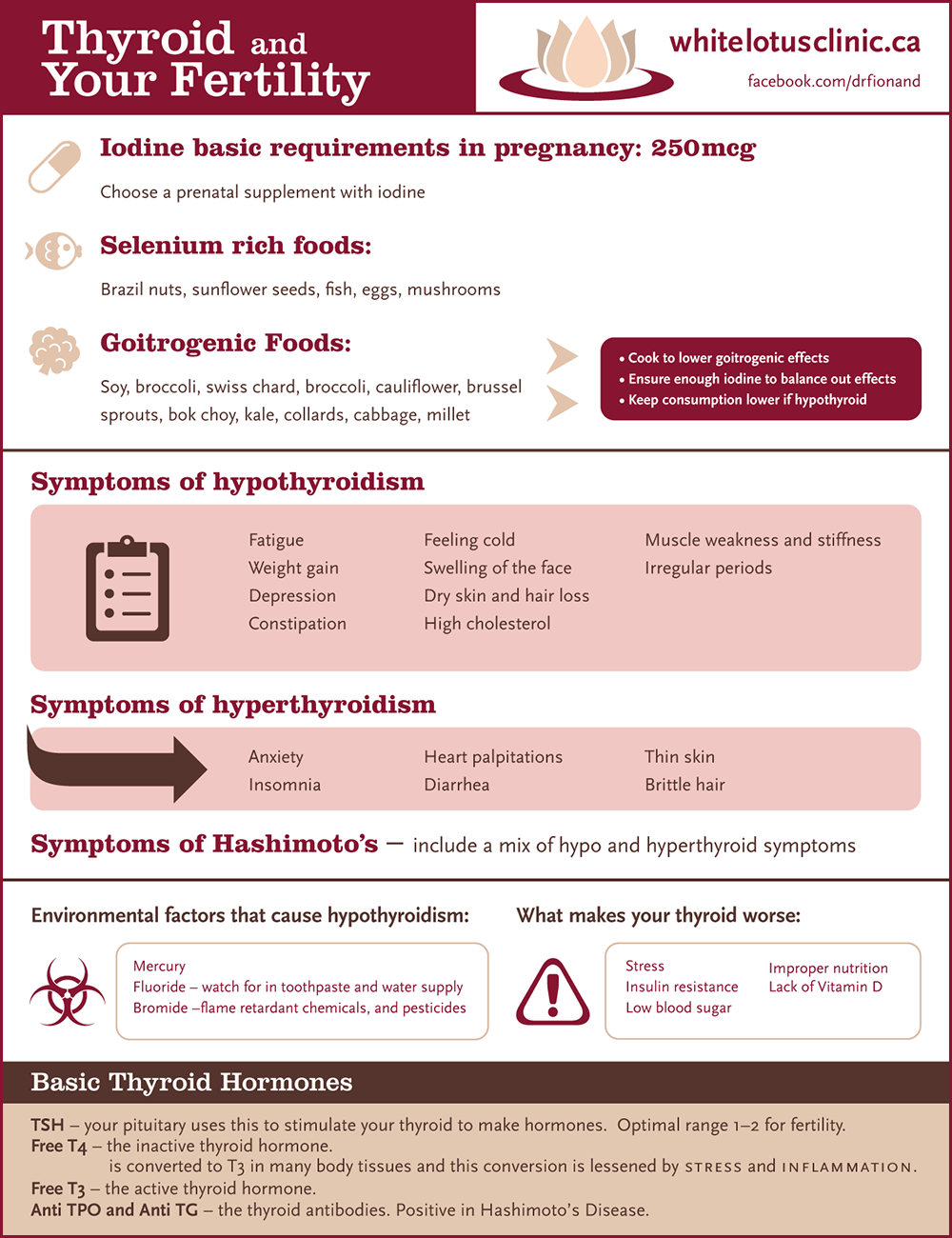Thyroid and fertility are intimately linked. Anyone who is having infertility issues or actively trying to conceive can pretty much tell you that everything and fertility seem linked – it’s just the way it goes. It takes a healthy momma to make a healthy baby and if your body isn’t keeping up with its own needs it’s certainly not going to take on the burden of an entirely new, vulnerable human that is 100% dependent. That is just good sound decision making. What that means is that in order to get pregnant you have to get healthy in lots of ways, and one of those ways is balancing your other hormones – thyroid included.
Thyroid and Fertility Infographic from Dr. Fiona – a ND in Toronto.
Thyroid and Fertility and Food Sensitivities
Thyroid health in women is not as easy as it sounds like it should be. There are so many factors and thyroid is often just the canary in the coal mine that lets you know there is something bigger going on. For both thyroid and fertility it is incredibly important to find and eliminate hidden food sensitivities. Food sensitivities can cause general inflammation, which can make implantation more difficult and affect sex hormone levels. Food sensitivities can also set up an unhealthy immune cascade which actually triggers your body to start attacking itself like in Hashimoto’s thyroiditis. If your body is attacking your thyroid then it’s absolutely vital to do whatever you can to protect yourself. Essentially if you’re worried about your thyroid or trying to get pregnant you have a good reason to get rid of food sensitivities. If you’re doing both or those things then there’s no excuse not to do this for yourself.
Thyroid and Fertility – Working With a Good Practitioner
It’s also important to know exactly what is going on – most primary care physicians will just test your TSH levels on a screening without looking into things on any deeper level. It can really help to see a good endocrinologist who will actually look at your hormone levels and thyroid antibodies (just in case it is Hashimoto’s) or to talk with a naturopathic doctor who can balance you on a whole body level. If you’re trying to get pregnant this becomes especially important because we can’t address the link between thyroid and fertility unless we are clear about exactly what is going on. Thyroids can be under-functioning because of poor nutrition, because of a goiter, because of altered sex or adrenal hormones or because of hashimoto’s. TSH levels just aren’t going to tell you any of those things. The best fertility team should have a reproductive endocrinologist, a naturopathic doctor and a good acupuncturist – especially if you’re considering IVF (In vitro fertilization) because acupuncture has been shown in research to increase the success rate of IVF so many IVF centers have licensed acupuncturists on staff. Keep in mind fertility is a group effort – mom, dad and all of the health care practitioners have to be working towards the same goal.
Thyroid and fertility are intimately linked because in order to have a healthy pregnancy, you really have to have a healthy body starting out. You just can’t skip this step.












